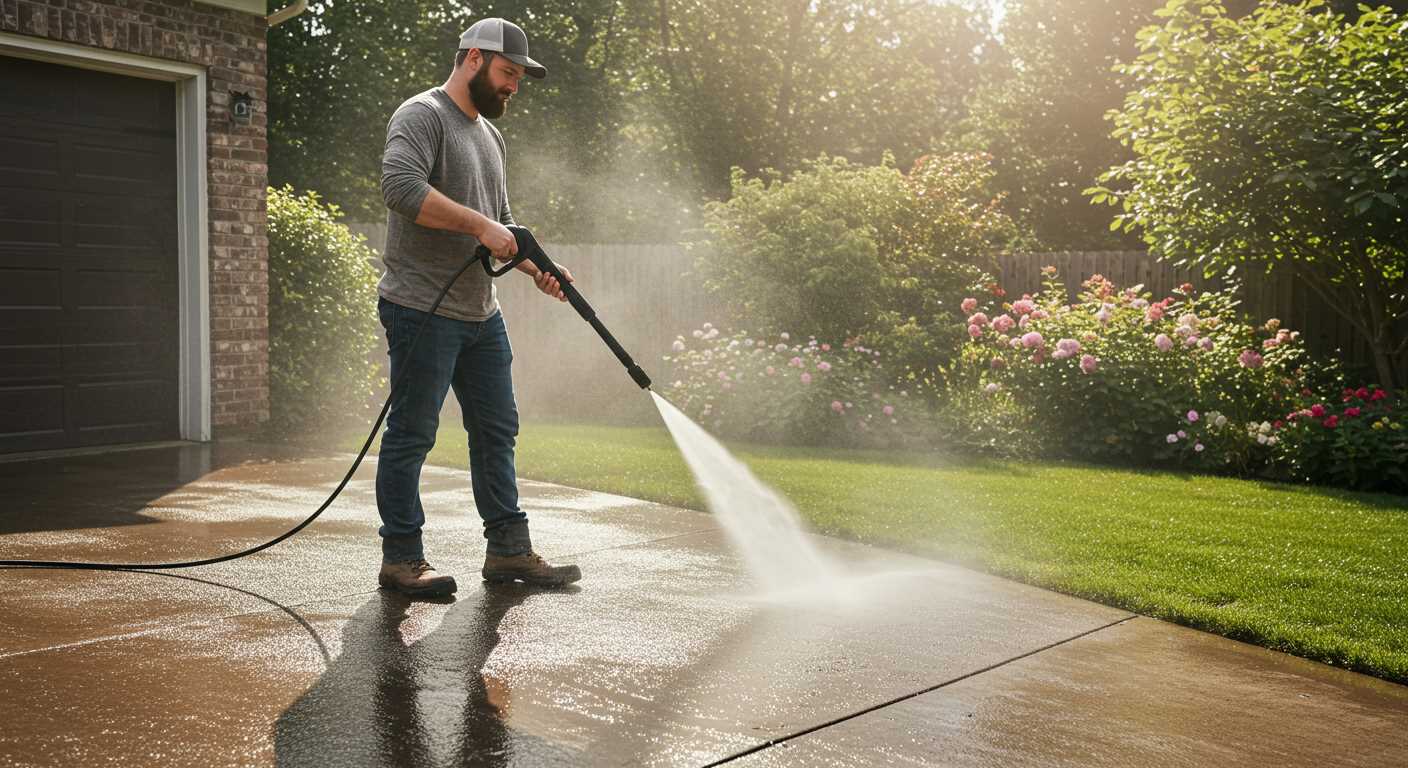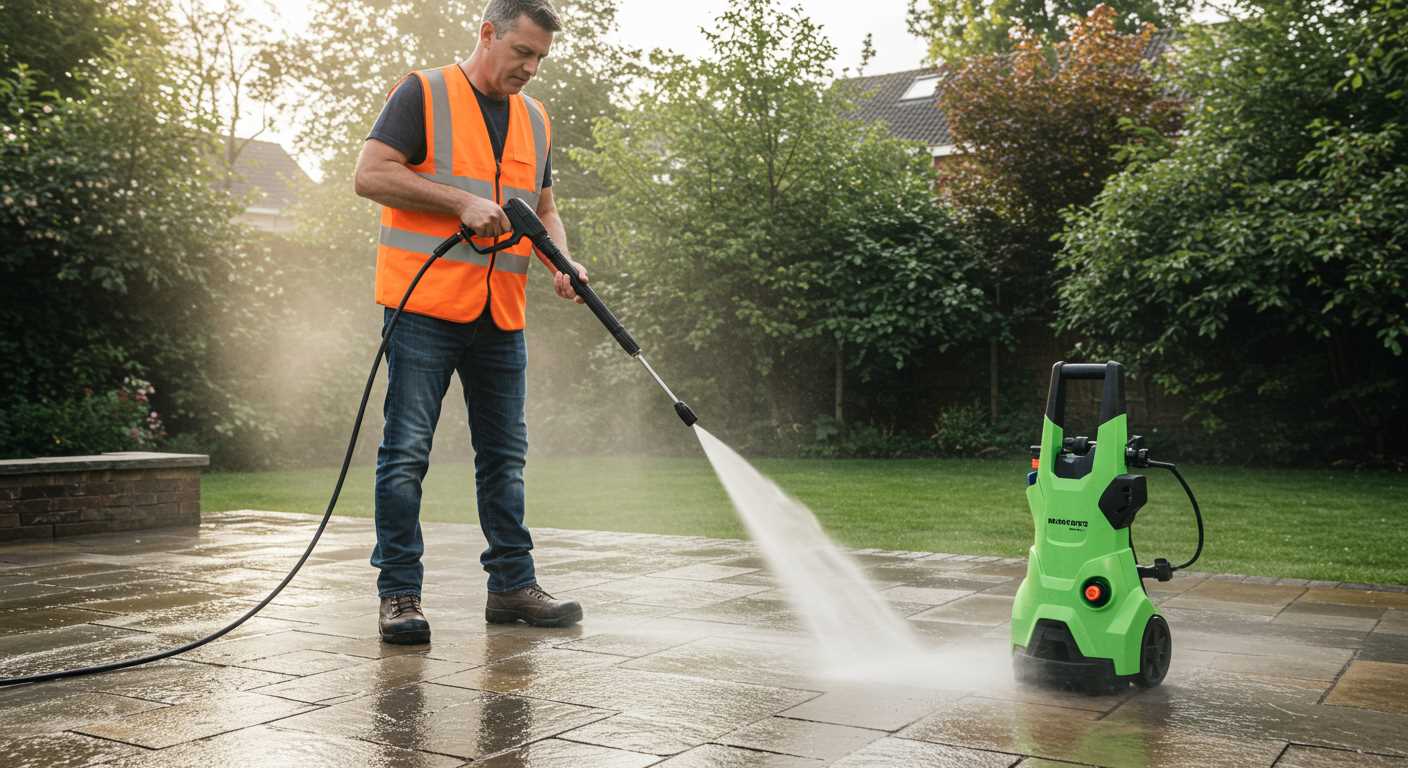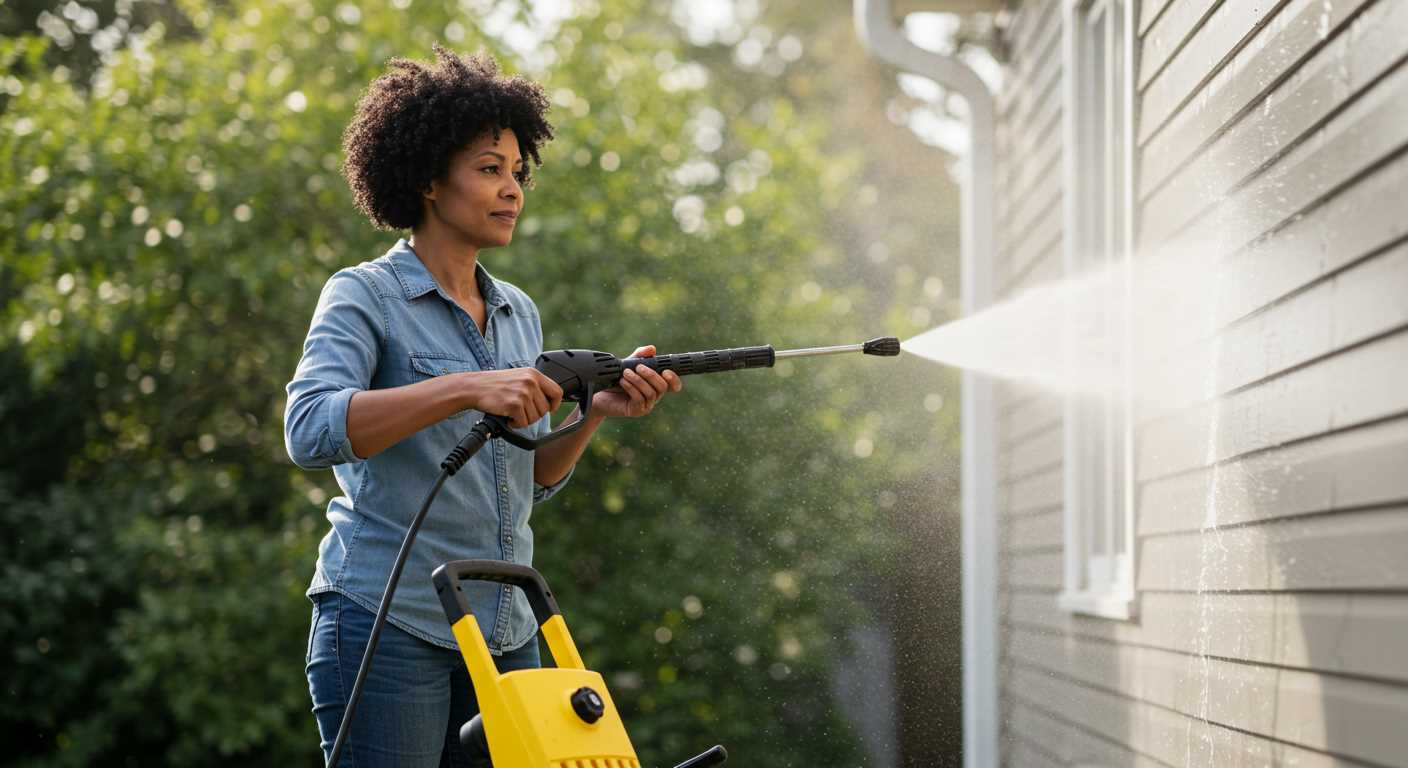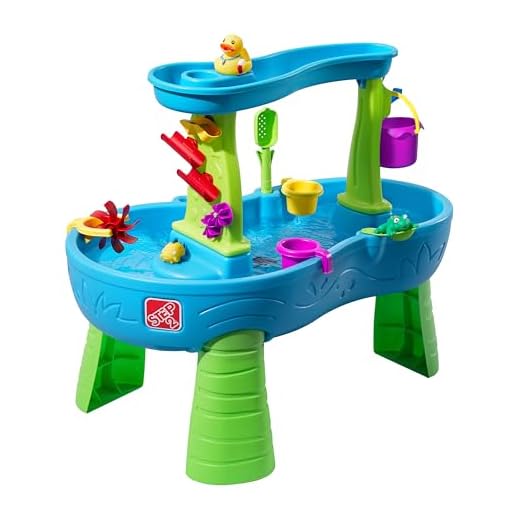



Yes, cleaning outdoor play equipment with a high-pressure cleaning machine can be done, but it requires some precautions. Before starting, ensure that all items are made from materials that can withstand high pressures, such as durable plastic and metal. Delicate components or electronics should be avoided or cleaned with caution to prevent damage.
Begin by removing any loose dirt or debris manually. Check for any visible wear or signs of damage. If everything looks good, select a wide spray nozzle to reduce pressure and distribute the water more evenly. This helps prevent structural damage while still ensuring a thorough clean.
Test the equipment on a small, inconspicuous area to gauge how it reacts to the water force. Keep the nozzle at least 12 inches away from the surface to mitigate potential impact damage. For stubborn stains, consider using a mild detergent specifically formulated for outdoor materials, applying it with a brush before rinsing.
Once finished, allow everything to dry completely before re-assembling or allowing children to play. Proper maintenance will extend the lifespan of play equipment, keeping it safe and enjoyable for years to come.
Using a High-Pressure Cleaner on Outdoor Play Equipment
Cleaning outdoor play items with a high-pressure cleaning device is feasible, provided certain guidelines are followed to ensure safety and effectiveness. Begin with a low setting to avoid damaging the material. Many play structures are made from plastic or treated wood, which can be sensitive to excessive force.
Prior to starting, remove any loose debris or dirt using a brush. This helps prevent the buildup of sludge when applying high-pressure water. Pay attention to crevices where grime tends to accumulate, as these areas may require extra scrubbing.
When operating the equipment, maintain a safe distance–typically around 30–50 cm–from the surface. This distance reduces the risk of gouging or stripping paint, especially on metallic components. For delicate items such as inflatable structures, avoid high-pressure cleaning entirely; they can be easily punctured.
Aftercare and Drying
After rinsing the equipment, ensure it dries thoroughly to prevent mould and mildew growth. For routine maintenance, consider a gentle soap solution applied via a soft cloth or sponge for regular cleaning without the need for high-pressure methods.
Potential Risks
Be mindful of the risk of water entering electronic components if the play item features lights or sound. Always disconnect power sources before cleaning. Assess the manufacturer’s guidelines for any specific recommendations regarding maintenance and cleaning procedures.
Ultimately, a proper approach can restore outdoor play items to a clean state while protecting them from potential damage.
Types of Outdoor Play Equipment Appropriate for High-Pressure Cleaning

Specific items in the realm of outdoor play can indeed withstand high-pressure cleaning methods, ensuring a thorough sanitisation and revitalisation. Here’s a breakdown of suitable play equipment that I’ve encountered in my years of experience.
1. Plastic Play Structures
Brightly coloured plastic equipment like slides and climbing frames often welcome a thorough rinse. Their robust construction allows them to resist damage under intense cleaning conditions, making them ideal candidates.
2. Ride-On Toys

Vehicles designed for children, such as scooters, tricycles, and pedal cars, benefit greatly from a good wash. They are generally made from durable plastics and metals, which can handle high-themed cleaning without sustaining harm.
3. Inflatable Items
Inflatable slides and bouncing castles can also be revitalised, although caution is necessary. Ensure to use a gentle setting to prevent punctures. Flushing these toys removes dirt and debris effectively.
| Type | Material | Cleaning Recommendation |
|---|---|---|
| Plastic Play Structures | Durable Plastic | Direct cleaning, higher pressure |
| Ride-On Toys | Plastic/Metal | Direct cleaning, moderate pressure |
| Inflatable Items | Vinyl/Plastic | Gentle clean, low pressure |
Ensuring that these play items receive proper care not only maintains their appearance but also extends their lifespan and safety for users. Prioritising the right techniques and equipment can yield outstanding results in outdoor cleanliness.
Recommended Pressure Settings for Safe Cleaning
For optimal safety and efficiency, adjusting water pressure to between 1200 and 1600 PSI is ideal. This range effectively eliminates dirt without risking damage to surfaces. Here are key guidelines:
- For plastic items like slides and swings, set the appliance to 1200 PSI. This prevents surface scratches while ensuring cleanliness.
- For wooden elements, such as playhouses, I recommend a maximum of 1500 PSI. Always test on a small, inconspicuous area first.
- Metal structures can withstand higher pressures. However, I suggest keeping it below 1800 PSI to maintain their finish and integrity.
Always start with a wider spray pattern, typically using a 25-degree nozzle. Narrow angles can increase the risk of gouging material. Maintain a distance of at least 2 feet from the surface to minimise the impact force.
Regular cleaning intervals help maintain the quality of equipment, thus prolonging its lifespan. Each session should be followed by thorough rinsing to remove any detergent residue, ensuring any cleaning agents don’t affect future playtime.
Cleaning Agents You Can Use with a Pressure Washer
Opt for specific cleaning solutions designed for high-pressure cleaning equipment. These detergents work effectively with water jets, providing a thorough clean without damaging surfaces.
Check for biodegradable and environmentally friendly options. Such products minimise harm while ensuring effective sanitisation, especially on items exposed to children.
Consider using simple ingredients like vinegar or baking soda for light stains and dirt. These natural options are safe and suitable for various materials, delivering excellent results without harsh chemicals.
For tough grime or mildew, a mild commercial cleaning agent may be appropriate. Ensure it’s compatible with your equipment and suitable for the materials being cleaned. Always check for specific manufacturer recommendations regarding detergent types.
Make certain to dilute concentrated cleaners according to the instructions provided. Improper concentrations can lead to residue or damage, so precision is key for optimal cleaning results.
Utilise a foam cannon attachment for even distribution of detergents. This accessory allows for efficient application, covering surfaces evenly and enhancing the cleaning outcome.
After applying the cleaning substance, ensure adequate rinsing. Residual detergent can attract dirt, negating your cleaning efforts, so thorough flushing with clean water is essential.
Steps to Properly Pressure Wash Garden Toys
Begin with gathering equipment: a reliable cleaning device, a suitable nozzle, and a source of clean water. Ensure safety gear, such as gloves and goggles, is worn to protect against debris and splashes.
Preparation
Remove any detachable parts from the items before cleaning, such as soft coverings or batteries. Inspect for cracks or damage to determine if thorough cleaning is safe. Rinse away loose dirt with a hose to avoid clogging the equipment.
Cleaning Process
Set the machine to a low-pressure setting, ideally around 1200-1500 PSI. Attach a wide spray nozzle to prevent concentrated jets from causing damage. Focus on small sections, holding the nozzle at a distance of about 2 feet from the surface. Sweep the nozzle back and forth in a consistent motion to lift grime without harming the finish.
If stubborn spots remain, gently apply a mild detergent solution directly onto the surface before rinsing it off with the cleaning device. Always rinse thoroughly to remove any cleaning residues that could affect the material over time.
Finally, allow the items to air dry completely before reassembling or storing them, ensuring no moisture remains that could lead to mould or mildew growth.
Common Mistakes to Avoid When Cleaning with High-Pressure Equipment

Prioritise the correct distance from the surface when cleaning. Standing too close risks damaging materials, especially plastic or softer surfaces. Maintain at least a distance of 2 feet to avoid unintentional harm.
Ignoring Manufacturer Recommendations
Always refer to the guidelines provided by manufacturers of both the cleaning device and the item being cleaned. Neglecting these instructions can lead to severe damage or void warranties.
Using Incorrect Nozzles
- Opt for wide-angle nozzles for broader coverage to prevent concentrated pressure on delicate surfaces.
- Reserve narrow nozzles for tougher stains on durable items only.
Applying excessive detergents is another error. Use cleaning agents sparingly to ensure effective cleaning without residue buildup. Rinse thoroughly afterwards to eliminate any chemical remnants.
Lastly, ignoring safety precautions can lead to injuries. Always wear protective eyewear and suitable footwear to avoid slips or projectiles during the process.
Post-Cleaning Care for Garden Toys
After rinsing off outdoor play items, the next step involves ensuring their longevity. Thoroughly dry the items to prevent moisture from causing mould or mildew. I suggest using a soft cloth or towel for this purpose. Hanging larger pieces in a well-aired spot helps them dry efficiently.
Once dry, inspect for any damage like cracks or wear. Repair minor issues to extend the lifespan of these items. A strong adhesive serves well for fixing small cracks, while replacement parts are advisable for severe damages.
Apply a protective coating to surfaces for added endurance against UV rays. Products designed for plastics work best; follow the manufacturer’s instructions for application to maintain effectiveness.
Store items in a shaded area when not in use. This practice reduces sun exposure and shields them from harsh weather conditions, ultimately preserving their appearance and functionality.
Routine checks throughout the season will keep everything in top shape. Regular maintenance not only enhances safety but also ensures enjoyment for years to come.
FAQ:
Can I safely use a pressure washer on my child’s plastic toys?
Using a pressure washer on plastic garden toys can be safe, but it requires careful consideration. Most plastic toys can withstand the pressure, but check the manufacturer’s guidelines first. Use a low-pressure setting and maintain a suitable distance to avoid damaging the toys. Thorough rinsing after cleaning is recommended to remove any soap residues, ensuring they are safe for your child to use.
What precautions should I take when using a pressure washer on outdoor toys?
Before using a pressure washer on outdoor toys, ensure that any electronics or batteries are removed, as water can damage them. Only use suitable cleaning agents designed for plastic materials if necessary. Always start with a low pressure and from a distance, gradually moving closer if required. After washing, thoroughly rinse the toys and allow them to dry completely before bringing them back into use.
Are there certain materials of garden toys that I should avoid using a pressure washer on?
Yes, some materials may not react well to pressure washing. Avoid using a pressure washer on wooden toys, as the high-pressure water can cause splintering or damage the finish. Similarly, fabric or inflatable toys is best cleaned by hand to prevent possible damage. Always check the material before proceeding with pressure washing.
How often should I clean garden toys with a pressure washer?
The frequency of cleaning garden toys with a pressure washer depends on usage and environmental factors. For toys that are frequently played with, consider cleaning them every few weeks. If toys are left outside and gather dirt or mildew, cleaning them more regularly is advisable. Ultimately, keeping an eye on their condition will help determine the best cleaning schedule.
What are some alternative cleaning methods for garden toys if I don’t want to use a pressure washer?
If you’d prefer not to use a pressure washer, there are several alternative cleaning methods. You can clean plastic toys with soapy water and a soft brush, rinsing them thoroughly afterwards. For deeper cleaning, a mixture of vinegar and water can be effective for disinfecting. Always allow the toys to dry completely before storage or re-use to prevent mould growth.










